If you would like to add more datasheets to the comparison table you can still find and add them around the site while browsing, querying or searching Device Specs. Meanwhile you will not lose the comparison table below. Furthermore unnecassary datasheets can be removed by clicking on the "Remove from comparison" buttons (ever more than one item during one page load) but in this case reloading the table will be needed. Then click again on the appropriate header "Compare" button.
|
|
| | | | | | |
|
Use the following link to refer to this comparison |
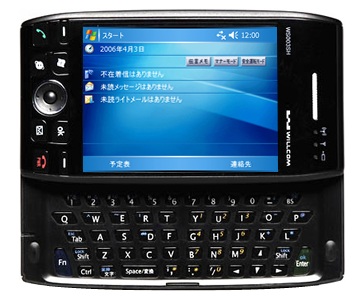
| | 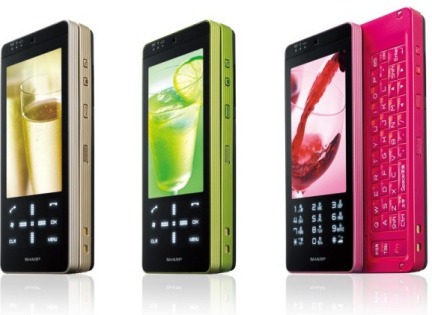
| 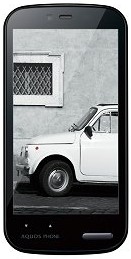
| 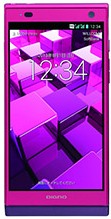
| 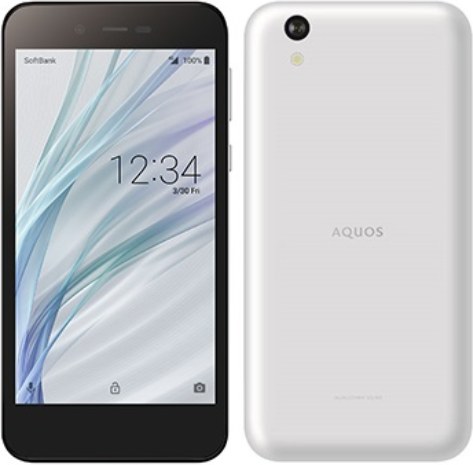
| 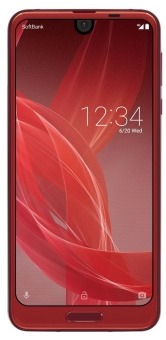
|
|
Remove all |
|  Add to compare Add to compare | |  Add to compare Add to compare | |  Add to compare Add to compare | |  Add to compare Add to compare | |  Add to compare Add to compare | |  Add to compare Add to compare | |  Add to compare Add to compare |
 Introduction Introduction |
Released |
2006 Feb |
2006 Sep |
2008 Jul |
2013 Sep |
2013 Jul 18 |
2018 Feb 16 |
2018 Jun 16 |
Announced |
|
|
|
|
|
2018 Jan 11 |
2018 May 11 |
Hardware Designer |
Sharp |
Sharp |
Sharp |
Sharp |
Kyocera Communications |
Sharp |
Sharp |
Manufacturer |
Sharp |
Sharp |
Sharp |
Sharp |
Kyocera Communications |
Sharp |
Sharp |
OEM ID |
|
|
WS020SH |
|
|
|
|
General Extras |
Passive stylus |
Passive stylus |
No |
No |
No |
Haptic touch feedback |
Haptic touch feedback |
Device Category |
Smartphone |
Smartphone |
Smartphone |
Smartphone |
Smartphone |
Smartphone |
Smartphone |
 Physical Attributes Physical Attributes |
Width |
69 mm |
69 mm |
50 mm |
60 mm |
66 mm |
71 mm |
74 mm |
Height |
130 mm |
130 mm |
116 mm |
120 mm |
134 mm |
144 mm |
156 mm |
Depth |
26 mm |
26 mm |
17.9 mm |
11.9 mm |
10.9 mm |
8.5 mm |
10 mm |
| Dimensions
| 2.72x5.12x1.02 inches |
2.72x5.12x1.02 inches |
1.97x4.57x0.70 inches |
2.36x4.72x0.47 inches |
2.60x5.28x0.43 inches |
2.80x5.67x0.33 inches |
2.91x6.14x0.39 inches |
Mass |
218 g |
218 g |
135 g |
|
134 g |
144 g |
181 g |
|
7.69 ounces |
7.69 ounces |
4.76 ounces |
|
4.73 ounces |
5.08 ounces |
6.38 ounces |
 Software Environment Software Environment |
Platform |
Windows (mobile-class) |
Windows (mobile-class) |
Windows (mobile-class) |
Android |
Android |
Android |
Android |
Operating System |
Microsoft Windows Mobile 5.0 for Pocket PC Premium Edition (Magneto) |
Microsoft Windows Mobile 5.0 for Pocket PC Premium Edition (Magneto) |
Microsoft Windows Mobile 6.1 Classic |
Google Android 4.1.2 (Jelly Bean) |
Google Android 4.2.2 (Jelly Bean) |
Google Android 8.0 (Oreo) |
Google Android 8.0 (Oreo) |
|
|
AKU 2.3.0 Japanese |
Japanese |
Japanese |
Japanese |
Japanese |
Japanese |
Software Extras |
No |
No |
No |
No |
No |
Navigation software,
Intelligent personal assistant |
Voice Command,
Navigation software,
Intelligent personal assistant |
 Application processor, Chipset Application processor, Chipset |
CPU Clock |
416 MHz |
416 MHz |
520 MHz |
1500 MHz |
1500 MHz |
1400 MHz |
2800 MHz |
CPU |
Intel XScale PXA270 (Bulverde), 2004, 32 bit, single-core, 32 Kbyte I-Cache, 32 Kbyte D-Cache |
Intel XScale PXA270 (Bulverde), 2004, 32 bit, single-core, 32 Kbyte I-Cache, 32 Kbyte D-Cache |
Intel XScale PXA270 (Bulverde), 2004, 32 bit, single-core, 32 Kbyte I-Cache, 32 Kbyte D-Cache |
Qualcomm Snapdragon S4 MSM8260A, 2012, 32 bit, dual-core, 16 Kbyte I-Cache, 16 Kbyte D-Cache, 1024 Kbyte L2, 28 nm, Qualcomm Adreno 225 GPU |
Qualcomm Snapdragon S4 MSM8960, 2012, 32 bit, dual-core, 16 Kbyte I-Cache, 16 Kbyte D-Cache, 1024 Kbyte L2, 28 nm, Qualcomm Adreno 225 GPU |
Qualcomm Snapdragon 430 MSM8937, 2016, 64 bit, octa-core, 512 Kbyte L2, 28 nm, Qualcomm Adreno 505 GPU |
Qualcomm Snapdragon 845 SDM845 (Napali), 2018, 64 bit, octa-core, 32 Kbyte I-Cache, 32 Kbyte D-Cache, 1536 Kbyte L2, 2048 Kbyte L3, 10 nm, Qualcomm Adreno 630 GPU |
 Operative Memory Operative Memory |
RAM Type |
SDRAM |
SDRAM |
SDRAM |
LPDDR2 SDRAM |
LPDDR2 SDRAM |
LPDDR3 SDRAM |
LPDDR4x SDRAM |
|
|
|
|
500 MHz |
500 MHz |
800 MHz |
1866 MHz |
RAM Capacity (converted) |
64 MiB RAM |
64 MiB RAM |
128 MiB RAM |
1 GiB RAM |
1.5 GiB RAM |
3 GiB RAM |
4 GiB RAM |
 Non-volatile Memory Non-volatile Memory |
Non-volatile Memory Interface |
Yes |
Yes |
Yes |
Yes |
Yes |
eMMC 5.1 |
Yes |
Non-volatile Memory Capacity (converted) |
128 MiB ROM |
256 MiB ROM |
256 MiB ROM |
8 GB ROM |
16 GB ROM |
32 GB ROM |
64 GB ROM |
|
60 MiB total user storage |
197 MiB total user storage |
|
|
|
|
|
 Display Display |
Display Notch |
|
|
|
|
|
|
1-notch |
Display Diagonal |
94 mm |
94 mm |
77 mm |
101 mm |
119 mm |
127 mm |
152.4 mm |
|
3.7 inch |
3.7 inch |
3 inch |
4 inch |
4.7 inch |
5 inch |
6 inch |
Resolution |
480x640 |
480x640 |
800x480 |
480x854 |
720x1280 |
1080x1920 |
1440x3040 |
Horizontal Full Bezel Width |
12.6 mm |
12.6 mm |
|
10.51 mm |
7.66 mm |
8.74 mm |
8.76 mm |
Display Area Utilization |
47.3% |
47.3% |
45.1% |
60.5% |
68.4% |
67.4% |
77.8% |
Pixel Density |
216 PPI |
216 PPI |
308 PPI |
246 PPI |
313 PPI |
441 PPI |
561 PPI |
Display Type |
Color TN-TFT LCD display |
Color TN-TFT LCD display |
Color ASV TFT LCD display |
Color TN-TFT LCD display |
Color TN-TFT LCD display |
Color ASV TFT LCD display |
Color ASV TFT LCD display |
| Display Subtype
| No |
No |
No |
No |
No |
Yes |
Yes |
Number of Display Scales |
65536 |
65536 |
65536 |
16.8M |
16.8M |
16.8M |
16.8M |
Scratch Resistant Screen |
No |
No |
No |
No |
No |
No |
Yes |
 Graphical Subsystem Graphical Subsystem |
Graphical Controller |
|
|
|
Qualcomm Adreno 225 |
Qualcomm Adreno 225 |
Qualcomm Adreno 505 |
Qualcomm Adreno 630 |
Dedicated Graphics Memory |
|
|
|
0.5 MiB |
0.5 MiB |
0.125 MiB |
1 MiB |
| GPU Clock |
|
|
|
|
|
|
710 MHz |
 Audio/Video Interfaces Audio/Video Interfaces |
 Audio Subsystem Audio Subsystem |
Microphone(s) |
mono |
mono |
mono |
Yes |
Yes |
stereo |
stereo |
| Loudspeaker(s) |
mono |
mono |
mono |
mono |
stereo |
mono |
mono |
| Audio Output |
2.5mm |
2.5mm |
2.5mm |
3.5mm |
3.5mm |
3.5mm |
3.5mm |
 Cellular Phone Cellular Phone |
Supported Cellular Bands |
PHS1900 bands |
PHS1900 bands |
PHS1900 bands |
PHS1900,
UMTS2100 (B1),
UMTS900 (B8),
UMTS1500 (B11) bands |
GSM900,
GSM1800,
GSM1900,
PHS1900,
UMTS2100 (B1),
UMTS900 (B8),
UMTS1500 (B11),
TD-LTE2500 (B41) bands |
GSM900,
GSM1800,
GSM1900,
UMTS2100 (B1),
UMTS1900 (B2),
UMTS900 (B8),
UMTS1500 (B11),
LTE2100 (B1),
LTE1900 (B2),
LTE1800 (B3),
LTE900 (B8),
TD-LTE2500 (B41) bands |
GSM850,
GSM900,
GSM1800,
GSM1900,
UMTS2100 (B1),
UMTS1900 (B2),
UMTS1700/2100 (B4),
UMTS850 (B5),
UMTS900 (B8),
LTE2100 (B1),
LTE1900 (B2),
LTE1800 (B3),
LTE1700/2100 (B4),
LTE850 (B5),
LTE900 (B8),
LTE1500 (B11),
LTE700 (B12),
LTE700 (B17),
LTE850 (B26),
LTE700 (B28),
TD-LTE2600 (B38),
TD-LTE2500 (B41),
TD-LTE3500 (B42) bands |
Supported Cellular Data Links |
Yes |
Yes |
Yes |
UMTS,
HSUPA,
HSDPA,
HSPA+ 21.1,
HSPA+ 42.2 data links |
GPRS,
EDGE,
UMTS,
HSUPA,
HSDPA,
LTE data links |
GPRS,
EDGE,
UMTS,
HSUPA,
HSUPA 5.8,
HSDPA,
HSDPA 14.4,
LTE,
LTE 100/50,
LTE 150/50 data links |
GPRS,
EDGE,
UMTS,
HSUPA,
HSUPA 5.8,
HSDPA,
HSDPA 14.4,
LTE,
LTE 100/50,
LTE 150/50,
LTE 300/50,
LTE 750/225 data links |
SIM Card Slot |
No |
No |
No |
Yes |
Yes |
Nano-SIM (4FF) |
Nano-SIM (4FF) |
Complementary Phone Services |
Voice transmission,
Vibrate,
Speakerphone |
Voice transmission,
Voice speaker,
Vibrate,
Speakerphone |
Voice transmission,
Voice speaker,
Vibrate,
Speakerphone |
Voice transmission,
Voice speaker,
Vibrate,
Speakerphone |
Voice transmission,
Voice speaker,
Vibrate,
Speakerphone |
Voice transmission,
Voice speaker,
Vibrate,
Speakerphone,
ANC,
HD Voice,
VoLTE |
Voice transmission,
Voice speaker,
Vibrate,
Speakerphone,
ANC,
HD Voice,
VoLTE |
SAR (head) |
0.213 W/kg |
|
|
|
|
|
|
 Secondary Cellular Phone Secondary Cellular Phone |
 Control Peripherals Control Peripherals |
Touchscreen Type |
Resistive screen |
Resistive screen |
Resistive screen |
Capacitive multi-touch screen |
Capacitive multi-touch screen |
Capacitive multi-touch screen |
Capacitive multi-touch screen |
Keyboard |
Slide-out QWERTY |
Slide-out QWERTY |
Slide-out QWERTY |
No |
No |
No |
No |
| Number of keys
| 54 |
54 |
45 |
|
|
|
|
Directional Pad |
5-way |
5-way |
5-way |
No |
No |
No |
No |
 Communication Interfaces Communication Interfaces |
Expansion Interfaces |
SDIO,
miniSD |
SDIO,
miniSD |
SDIO,
TransFlash,
microSD,
microSDHC |
TransFlash,
microSD,
microSDHC |
TransFlash,
microSD,
microSDHC |
TransFlash,
microSD,
microSDHC,
microSDXC |
TransFlash,
microSD,
microSDHC,
microSDXC |
USB |
USB 1.1 |
USB 1.1 |
USB 2.0 |
USB 2.0 |
USB 2.0 |
USB 2.0 |
USB 2.0 |
|
USB FS (12 Mbps) |
USB FS (12 Mbps) |
USB FS (12 Mbps) |
USB HS (480 Mbps) |
USB HS (480 Mbps) |
USB HS (480 Mbps) |
USB HS (480 Mbps),
USB SS (5 Gbps) |
| USB Services
| USB Host,
USB PD |
USB Host,
USB PD |
USB charging |
USB charging,
USB Host,
USB OTG 1.3,
USB PD |
USB charging,
USB Host,
USB OTG 1.3,
USB PD |
USB charging,
USB Host,
USB OTG 1.3,
USB PD |
USB charging,
USB fast charging,
USB Host,
USB OTG 1.3,
USB PD |
| USB Connector
| USB Mini-B (mini-USB) |
USB Mini-B (mini-USB) |
USB Micro-AB |
USB Micro-AB |
USB Micro-AB |
USB C reversible |
USB C reversible |
Bluetooth |
No |
Bluetooth 2.0 |
Bluetooth 2.0 |
Bluetooth 3.0 |
Bluetooth 4.0 |
Bluetooth 4.2 |
Bluetooth 5.0 |
Wireless LAN |
802.11b |
802.11b |
802.11b,
802.11g |
802.11b,
802.11g,
802.11n |
802.11a,
802.11b,
802.11g,
802.11n |
802.11b,
802.11g,
802.11n |
802.11a,
802.11b,
802.11g,
802.11n,
802.11ac |
| Wireless Services
| No |
No |
No |
DLNA,
Wi-Fi Direct |
No |
Miracast,
Wi-Fi Direct,
Wi-Fi Tethering |
Wi-Fi Direct,
Wi-Fi Tethering,
WiDi |
NFC |
No |
No |
No |
No |
No |
No |
NFC A,
NFC B |
IR |
No |
IrDA 1.2 |
IrDA 1.2 |
Yes |
No |
No |
No |
|
No |
115200bit/s (SIR/CIR) |
115200bit/s (SIR/CIR) |
Yes |
No |
No |
No |
Serial |
RS-232 |
RS-232 |
No |
No |
No |
No |
No |
| Serial Connector
| Proprietary |
Proprietary |
No |
No |
No |
No |
No |
| Serial Data Rate
| 115200 bps |
115200 bps |
No |
No |
No |
No |
No |
 Multimedia Broadcast Multimedia Broadcast |
FM Radio Receiver |
No |
No |
No |
No |
FM radio (76-108 MHz) with RDS |
No |
No |
Digital Media Broadcast |
No |
No |
ISDB-T 1-Seg receiver |
ISDB-T 1-Seg receiver |
ISDB-T 1-Seg receiver |
No |
ISDB-T 1-Seg,
ISDB-T Full-Seg receiver |
 Satellite Navigation Satellite Navigation |
Complementary Satellite Services |
No |
No |
No |
A-GPS,
Geotagging,
QuickGPS |
Simultaneous GPS,
A-GPS,
Geotagging,
QuickGPS |
Simultaneous GPS,
A-GPS,
Geotagging,
QuickGPS |
Simultaneous GPS,
A-GPS,
Geotagging,
QuickGPS |
Supported GLONASS protocol(s) |
No |
No |
No |
L1OF |
L1OF |
No |
L1OF |
 Primary Camera System Primary Camera System |
Camera Placement |
Rear |
Rear |
Rear |
Rear |
Rear |
Rear |
Rear |
Camera Image Sensor |
CMOS |
CMOS |
CMOS |
CMOS |
CMOS |
BSI CMOS |
BSI CMOS |
Number of effective pixels |
1.3 MP camera |
1.3 MP camera |
1.9 MP camera |
4.9 MP camera |
8.0 MP camera |
13.0 MP camera |
22.5 MP camera |
Aperture (W) |
|
|
|
|
|
f/2.20 |
f/1.90 |
Zoom |
1.0 x optical zoom |
1.0 x optical zoom |
1.0 x optical zoom |
1.0 x optical zoom |
1.0 x optical zoom |
1.0 x optical zoom |
1.0 x optical zoom |
|
|
|
|
|
|
|
8.0 x digital zoom |
Focus |
No |
No |
CD AF |
CD AF |
CD AF |
CD AF |
PD AF |
Video Recording |
176x144 pixel |
320x240 pixel |
320x240 pixel |
|
1280x720 pixel |
1920x1080 pixel |
3840x2160 pixel |
|
30 fps |
|
|
30 fps |
30 fps |
30 fps |
30 fps |
Flash |
No |
No |
No |
single LED |
single LED |
single LED |
dual LED |
Camera Extra Functions |
No |
No |
No |
Macro mode |
Red-eye reduction,
Macro mode,
Panorama Photo |
HDR photo,
Burst mode,
Touch focus,
Macro mode,
Panorama Photo,
Face detection,
Face tagging,
Smile detection |
EIS (video),
OIS,
OIS (video),
HDR photo,
HDR video,
Slow motion video,
Burst mode,
Touch focus,
Macro mode,
Panorama Photo,
Face detection,
Face tagging,
Smile detection,
Face retouch |
Aux. Camera Image Sensor |
No |
No |
No |
No |
No |
No |
BSI CMOS |
Aux. Camera Number of Pixels  |
|
|
|
|
|
|
16.3 MP aux. cam |
Aux. Camera Aperture (W) |
|
|
|
|
|
|
f/2.40 |
Aux. Camera Extra Functions |
No |
No |
No |
No |
No |
No |
EIS (video) |
 Secondary Camera System Secondary Camera System |
Secondary Camera Placement |
No |
No |
No |
Front |
Front |
Front |
Front |
Secondary Camera Sensor |
No |
No |
No |
CMOS |
CMOS |
BSI CMOS |
CMOS |
Secondary Camera Number of pixels |
|
|
|
0.3 MP sec. cam |
1.2 MP sec. cam |
5.0 MP sec. cam |
16.3 MP sec. cam |
Secondary Aperture (W) |
|
|
|
|
|
f/2.20 |
f/2.00 |
Secondary Video Recording |
|
|
|
64x480 pixel |
1280x720 pixel |
1280x720 pixel |
1920x1080 pixel |
|
|
|
|
|
|
30 fps |
30 fps |
Secondary Camera Extra Functions |
No |
No |
No |
No |
No |
Burst mode,
Panorama Photo,
Face detection |
EIS (video),
HDR photo,
Burst mode,
Panorama Photo,
Face detection,
Smile detection,
Face retouch |
 Built-in Sensors Built-in Sensors |
Built-in compass |
No |
No |
No |
Yes |
Yes |
Yes |
Yes |
Built-in accelerometer |
No |
No |
No |
Yes |
Yes |
Yes |
Yes |
Built-in gyroscope |
No |
No |
No |
No |
No |
Yes |
Yes |
Additional sensors |
No |
No |
No |
L sensor,
P sensor |
L sensor,
P sensor |
L sensor,
P sensor |
FP sensor,
L sensor,
P sensor |
 Ingress Protection Ingress Protection |
Protection from solid materials |
Yes |
Yes |
Yes |
5 Protected against dust with limited ingress |
5 Protected against dust with limited ingress |
6 Totally protected from dust |
6 Totally protected from dust |
Protection from liquids |
Yes |
Yes |
Yes |
7 Protected against immersion up to 1m of depth |
7 Protected against immersion up to 1m of depth |
8 Protected against immersion beyond 1m of depth |
8 Protected against immersion beyond 1m of depth |
Protection against mechanical impacts |
|
|
|
|
|
122 cm |
|
Immersion into liquids (depth limit) |
|
|
|
|
|
150 cm |
150 cm |
Immersion into liquids time limit |
|
|
|
|
|
30 min |
3 min |
Military Standard Compliance (MIL-STD) |
No |
No |
No |
No |
No |
MIL-STD-810G |
No |
 Power Supply Power Supply |
Battery |
Li-ion |
Li-ion |
Li-ion |
Yes |
Yes |
Li-ion |
Li-ion |
|
removable |
removable |
removable |
Yes |
Yes |
built-in |
built-in |
|
1-cell |
1-cell |
1-cell |
1-cell |
1-cell |
1-cell |
1-cell |
Nominal Battery Capacity |
1400 mAh battery |
1400 mAh battery |
|
|
|
2700 mAh battery |
3130 mAh battery |
Estimated Battery Life |
11.0 hours |
11.0 hours |
|
|
|
|
|
| Talk Time |
|
|
|
|
|
20.0 hours |
35.0 hours |
 Geographical Attributes Geographical Attributes |
Market Countries |
Japan |
Japan |
Japan |
Japan |
Japan |
Japan |
Japan |
Market Regions |
Asia |
Asia |
Asia |
Asia |
Asia |
Asia |
Asia |
Mobile Operator |
Willcom Inc. |
Willcom Inc. |
Willcom Inc. |
Willcom Inc. |
Willcom Inc. |
SoftBank Corp.,
Willcom Inc. |
SoftBank Corp.,
Willcom Inc. |
 Datasheet Attributes Datasheet Attributes |
Data Integrity |
Final |
Final |
Final |
Preliminary |
Preliminary |
Final |
Preliminary |
Added |
2006-01-17 20:10 |
2006-07-14 23:00 |
2008-07-08 23:12 |
2013-07-07 10:22 |
2013-07-05 03:58 |
2018-01-12 11:01 |
2018-05-13 22:33 |